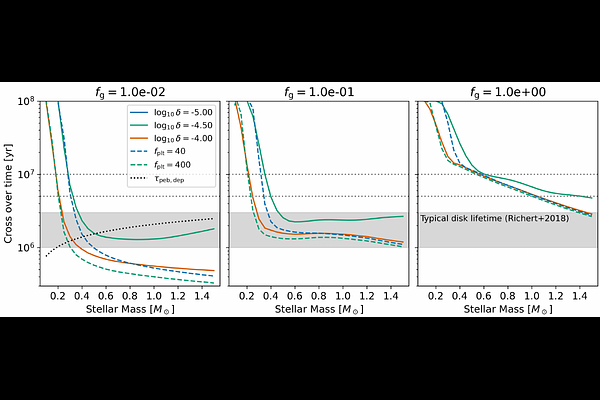Giant planet formation via pebble accretion across different stellar masses

Giant planet formation via pebble accretion across different stellar masses
Sho Shibata, Ravit Helled
AbstractThe occurrence rate of cold Jupiters was found to depend on stellar mass. The formation environment in the protoplanetary disks regulates core formation and the subsequent gas accretion. In this study, we simulate giant planet formation via pebble accretion accounting for various stellar masses, core formation times, disk turbulent viscosities, and grain opacities. We use a self-consistent formation model that calculates the solid accretion rate and gas accretion rate of growing protoplanets. We investigate how the planetary formation, in particular, the contraction of the envelope, and the formation timescale change under different conditions. We find that to reproduce the observed occurrence rate of cold Jupiters, giant planets must undergo slow envelope contraction after they reach pebble isolation, which lasts for several Myrs. Such a slow contraction phase can be achieved when the grain opacity is assumed to be as high as that of the interstellar medium (ISM). If the grain opacity is smaller than the ISM opacity by a factor of ten or more, the growing protoplanets reach crossover mass within 3 Myrs and form too many cold Jupiters around stars of >0.4Msun. Protoplanets around low-mass stars <0.4Msun take >10 Myrs to reach crossover mass also with low grain opacity. If the grain opacity in the planetary envelope is much lower than that of ISM, other mechanisms, such as atmospheric recycling or planetesimal accretion, is required for cold Jupiter formation. We next explore how the deposition of the accreted heavy elements to the planetary envelope changes the formation timescale. Our model suggests that the formation timescale could be longer due to heavy-element enrichment, resulting from the lower core mass at pebble isolation. We conclude that the details of the formation processes have a significant effect on the planetary growth and therefore, the formation of gaseous planets.